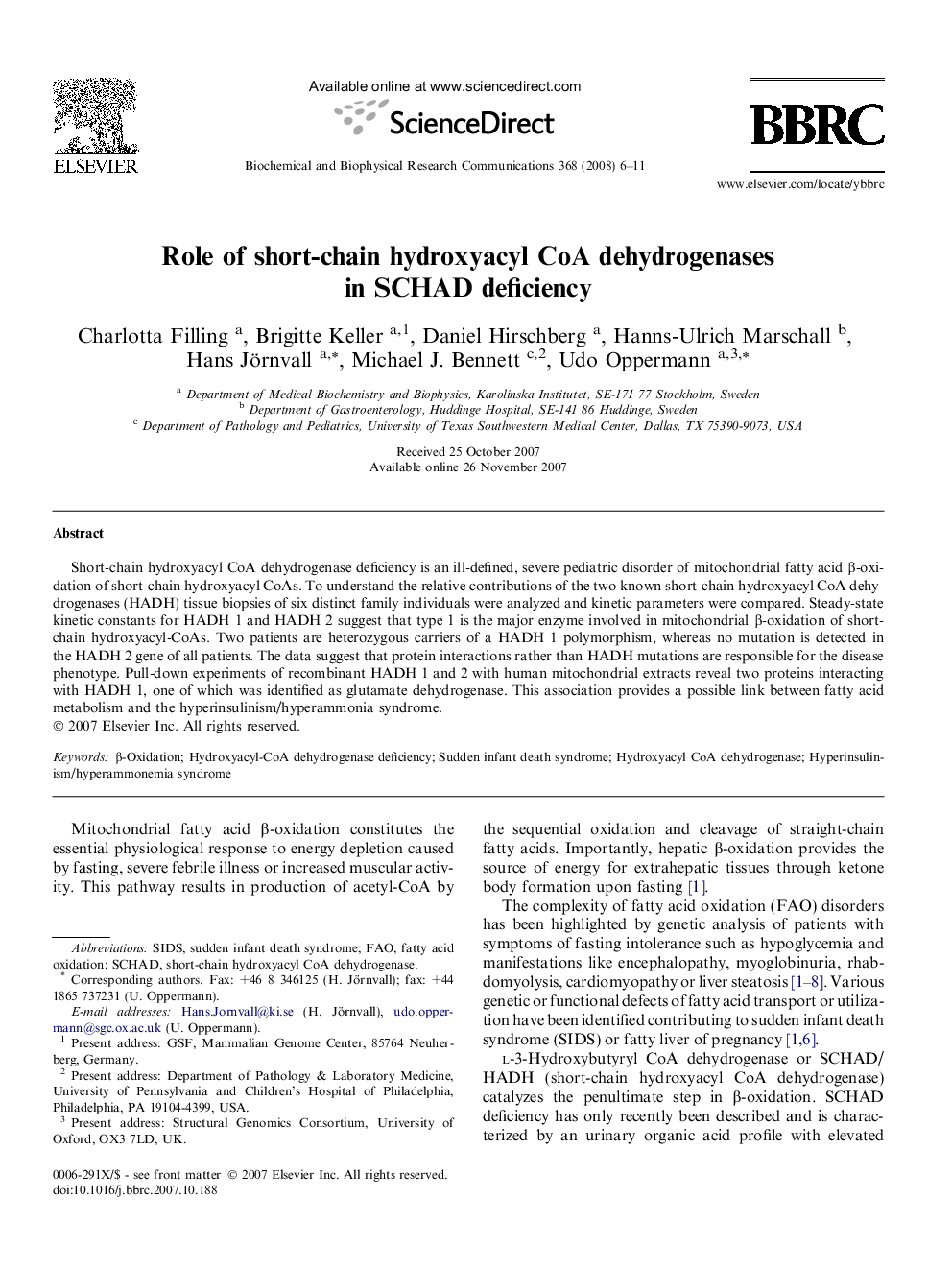| Article ID | Journal | Published Year | Pages | File Type |
|---|---|---|---|---|
| 10766867 | Biochemical and Biophysical Research Communications | 2008 | 6 Pages |
Abstract
Short-chain hydroxyacyl CoA dehydrogenase deficiency is an ill-defined, severe pediatric disorder of mitochondrial fatty acid β-oxidation of short-chain hydroxyacyl CoAs. To understand the relative contributions of the two known short-chain hydroxyacyl CoA dehydrogenases (HADH) tissue biopsies of six distinct family individuals were analyzed and kinetic parameters were compared. Steady-state kinetic constants for HADH 1 and HADH 2 suggest that type 1 is the major enzyme involved in mitochondrial β-oxidation of short-chain hydroxyacyl-CoAs. Two patients are heterozygous carriers of a HADH 1 polymorphism, whereas no mutation is detected in the HADH 2 gene of all patients. The data suggest that protein interactions rather than HADH mutations are responsible for the disease phenotype. Pull-down experiments of recombinant HADH 1 and 2 with human mitochondrial extracts reveal two proteins interacting with HADH 1, one of which was identified as glutamate dehydrogenase. This association provides a possible link between fatty acid metabolism and the hyperinsulinism/hyperammonia syndrome.
Related Topics
Life Sciences
Biochemistry, Genetics and Molecular Biology
Biochemistry
Authors
Charlotta Filling, Brigitte Keller, Daniel Hirschberg, Hanns-Ulrich Marschall, Hans Jörnvall, Michael J. Bennett, Udo Oppermann,
